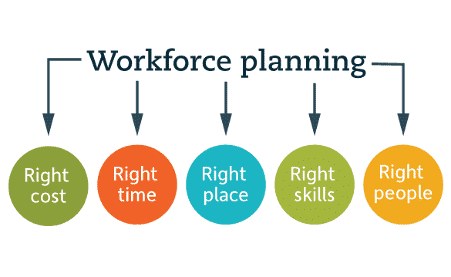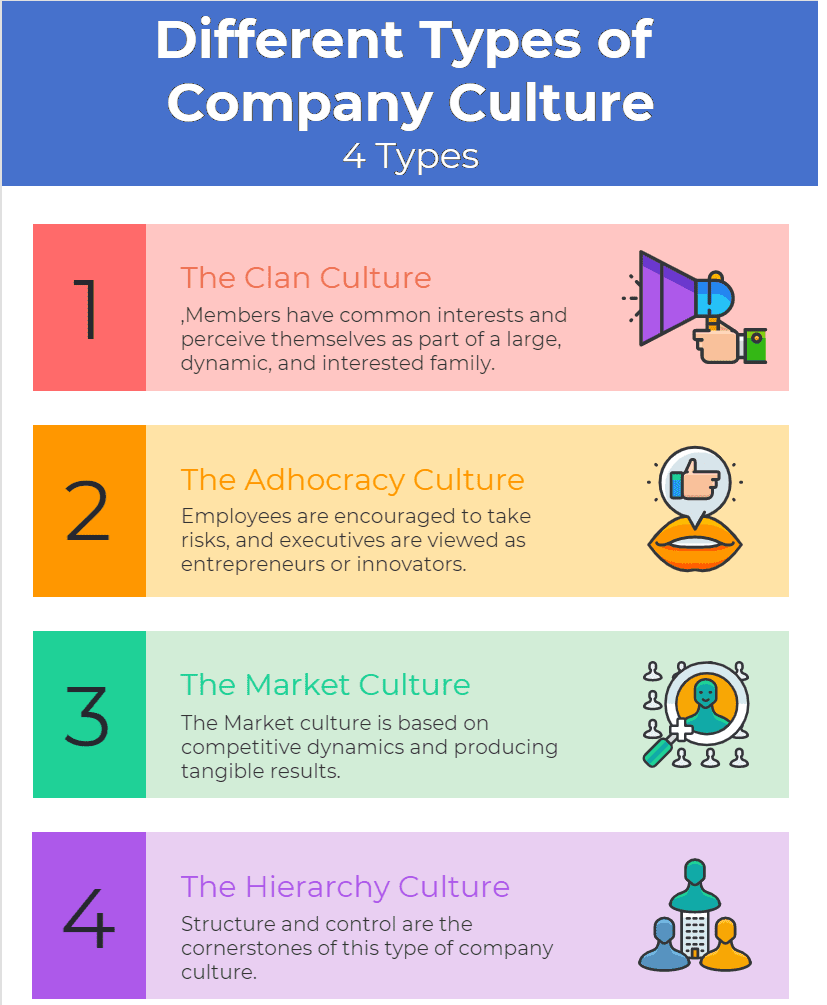Globally, businesses are facing significant challenges in recruiting and retaining talent. The unprecedented shifts in the business landscape, the changing needs of the modern workforce, and financial uncertainty have left organizations in a difficult position.
Traditional organizational cultures are struggling to provide an environment where employees can truly thrive and engage.
In today’s evolving work environment, company culture serves as the cornerstone of an organization, with the power to either stabilize or disrupt the entire setup. HR leaders must grasp the complexities of a progressive, high-performance culture and apply them wisely.
A genuine, supportive, trustworthy, reliable, and performance-oriented company culture is essential to addressing the demands of the contemporary workforce. Such a culture fosters effective team collaboration, reduces employee turnover, builds strong relationships, delivers higher returns on investment, and boosts productivity.
A report by Raj Shivagopal, a professor at Columbia Business School, found that company culture is essential for organizations to excel, with 90% of respondents saying that culture is important for their firms as it leads to higher productivity, performance, and ROI.
Even with all the research and data corroborating the impact of company culture on growth and profitability, it hasn’t received much attention from global leaders. While many organizations are looking for quick fixes, questions like, “Who is responsible for changing the culture?” and “How do you create a high-performance culture in an unpredictable business environment?” remain unanswered.
In this article, we will discuss the intricacies of high-performance culture and help you create a framework to cultivate it in your organization.
- What is a High-Performance Culture?
- Characteristics of a High-Performance Culture
- What Are the Benefits of a High-Performance Culture
- How to Cultivate a High-Performance Culture (High-Performance Culture Framework)
- How Does Technology Support a High-Performance Culture?
What is a High-Performance Culture?
To set the high-performance culture definition straight, let’s break it down into two parts: organizational culture and high performance.
Company culture or organizational culture is the set of values, beliefs, attitudes, philosophies, and practices followed by organizations that guide the actions and behaviors of employees to execute their activities. A strong and positive culture has the potential to enhance the performance of employees by acting as the fabric that weaves everything together.
High performance refers to individuals, teams, or organizations as a whole that are highly focused on their goals and can achieve better results through a common vision, collaboration, skills, and resilience.
A high-performance culture empowers employees to excel beyond their roles, guided by shared values, beliefs, and philosophy. This culture promotes accountability, and ownership, and allocates resources for continuous improvement and goal achievement, ensuring both professional success and business growth.
“The traditional employer-centric world of work is fading. If the companies do not step up to provide a better employee experience now, their future is also bound to fade with time. Today’s organizations need to bolster forward and maintain a highly generous and driven work culture for their employees if they wish to become and remain industry leaders.” Aishwarya Khan, Content Head, Engagedly
Characteristics of a High-Performance Culture
There are multiple elements to organizational culture, and leaders define these elements based on the core values of their organizations.
But how do you identify the cultural values and elements that reciprocate the most with employees and lead them down the path of high performance?
Knowledge of high-performance culture values and characteristics is a must for building high-performing teams—teams that go beyond and above their job responsibilities to add value to the tasks they perform and ensure organizational success.
There is no one-size-fits-all approach that organizations can use to build a strong culture, but the hallmarks of a high-performance corporate culture include the following:
1. Supportive, Inclusive, and Empathetic Leadership
Employees look up to leaders as role models. Their ideologies and principles, the way they behave, execute tasks, reciprocate to challenges, and connect with employees, have a profound impact on the productivity, engagement, and performance of the workforce.
Empathy in organizations goes a long way in the workplace. Empathetic leaders can cultivate an environment of diversity, innovation, problem-solving, adaptability, and inclusiveness, thereby creating a high-performance culture in the organization.
Organizations with empathetic and inclusive leadership reap higher dividends. As per EY’ US Consulting study 2023, empathetic leadership has the following effects on the organization:
There are many upsides to empathetic leadership in the workplace, including:
-
- Inspiring positive change within the workplace (87%)
- Mutual respect between employees and leaders (87%)
- Increased productivity among employees (85%)
- Reduced employee turnover (78%)
“A transformation’s success or failure is rooted in human emotions, and this research spotlights just how critical empathy is in leadership,” said Raj Sharma, EY Americas Consulting Vice Chair. “Recent years taught us that leading with empathy is a soft and powerful trait that helps empower employers and employees to collaborate better, and ultimately create a culture of accountability.”
2. Respect for Employees
Respect is the predominant factor responsible for building a high-performance culture. Employees who feel respected at the workplace are more productive, efficient, and loyal towards their employers.
“Your employees are individuals with hopes, fears, and ambitions. Respect their individuality, differences, contributions, personal goals, and ambitions, and be considerate toward their problems. Genuine and authentic respect propels your workforce towards higher levels of commitment towards the organization.” Srikant Chellappa, President, Engagedly
In any industry, employees expect the culture to be respectful and considerate of their feelings.
The research by Christine Porath, in her book Mastering Civility: A Manifesto for the Workplace, highlights how incivility in the workplace can have serious ramifications on businesses.
The research found that the lack of respect led to the following among employees:
- 48% intentionally reduced their work effort
- 47% spent less time at work
- 66% saw their performance decline after being treated disrespectfully
- 80% of employees found themselves thinking about projects that caused disrespect
3. Learning and Development
Businesses understand the importance of learning and development in organizations. How it helps in creating a skilled, dynamic, and engaged workforce, and its impact on the key performance areas.
However recent research shows that learning programs focused on both the personal and professional development of employees are much more effective. It helps create a culture of high performance by making employees accountable and aware of their training needs and by aligning personal goals with organizational objectives.
To set clear professional development goals for work that align with both personal and organizational growth, it is important to develop structured development programs for leaders as well.
The decreasing shelf life of skills has made continuous learning and skill development the fuel for business sustainability and growth. Employers who understand and invest in their talent needs reap multiple benefits from a high-performance learning culture.
Focus on creating structured and customized employee development programs rather than offering occasional training sessions that do not focus on the actual training needs of employees. A robust employee training and development program can be the key to building a continuous learning culture that empowers employees to perform at their best.
4. Workplace Transparency
One of the most important characteristics of a high-performance culture is workplace transparency.
An environment that provides comfort for employees to freely share their thoughts and ideas helps harbinger transparency, builds trust between employees and managers, and encourages employees to innovate and use their creativity in the workplace.
Transparency in the workplace has become a gold standard for both employees and customers.
As per Jayashankar Balaraman, Founder & CEO of Engagedly, “Transparency in the workplace reflects vulnerability, but without it, there’ll be insecurities that will rule out the possibility of a positive workplace culture. That’s a hard pass. This kind of bargain will cost organizations more than what they can think of.”
The Future of Work study conducted by Slack found that 87% of employees want their next employers to be more transparent with them. Another report by Sprout Social highlighted that 73% of consumers are willing to pay for transparent brands.
These startling statistics show the importance of transparency in an organizational culture for both employee performance and business sustainability.
5. Employee Empowerment
Employee empowerment happens when leadership provides their employees with the autonomy, resources, and support required to make decisions and execute their tasks with confidence.
Accountability is the key to driving a high-performance culture. When employees have the freedom to make their own choices, they see a boost in their confidence, motivation, and productivity. It further leads to more participation, collaboration, and happiness in the workplace.
What are the Benefits of a High-Performance Culture?
So far, we have understood the different characteristics of a high-performance culture and how they impact the organization. Before we discuss the steps to building a high-performance framework, let us dive into the different aspects of businesses that organizational culture touches upon and what benefits can be derived from them.
The following are some of the upsides of a high-performance culture:
Benefits to Employees
Recent events in the global business space have catapulted the expectations of employees. They now want to work in a culture that helps them thrive, understands and recognizes their contributions, supports them to achieve more, and makes them feel like part of the organizational journey.
A high-performance work culture benefits employees in the following ways:
- Increases innovation, creativity, and problem-solving skills of employees
- Improves relationship between employees and managers
- Improves intra-organizational communication
- Enhances employee productivity and performance
- Creates a positive, healthy, and vibrant environment
- Keeps employees motivated and focussed on the tasks
- Increases happiness quotient in the workplace
Benefits to Employers
Per the PwC Global Survey, organizational culture has become a priority for business leaders.
In the last decade, the importance of culture has risen tremendously, and it has become an important agenda item for senior management.
High-performance culture companies have swung the pendulum in their favor by leveraging their culture as a competitive advantage, resulting in success across multiple domains.
Employers can get the following benefits from a high-performance work culture:
- Improved customer satisfaction
- Reduced employee turnover
- Higher revenue streams
- Organizational adaptability to unprecedented changes
- A healthier and happier workforce
- Enhanced employee brand image
How to Create a High-Performance Culture? (High-Performance Culture Framework)
Creating a high-performance culture takes time, ownership, and resources. Leaders need to first gauge the current state of the organizational culture before they jump into making changes.
The following process highlights the high-performance framework required to create a performance-driven culture:
1. Monitor Culture from Employees’ Perspective
The first step to building a high-performance culture requires understanding it from the employees’ perspectives. The following questions will help you comprehend that.
- What do employees feel about the current state of the culture?
- What elements do employees think are important to drive positive change?
- How do employees define a high-performance culture?
- What changes would employees like to see in the company culture?
- What role do employees feel that leadership has to play in organizational culture?
A thorough diagnosis of organizational culture from the employees’ perspective will provide the action points needed to start building the foundation of a high-performance culture model.
2. Leadership Communication
Leaders need to walk the talk. They must communicate frequently with employees to:
- Exhibit values and behaviors they want to instill in the company culture
- Communicate goals and shared values to get employees onboarded
- Answer questions to instill confidence and resilience in employees
- Gain trust and support, inspire change, and align the workforce with the leadership strategy
- Gather feedback from employees and act on it with intent
Regular, meaningful conversations between managers and their teams play a crucial role in fostering this communication.
Without effective communication from leaders, a cultural shift becomes ineffective and loses its value.
3. Set Shared Values
What does the organization stand for? What policies and practices make it unique? What is the mission and vision of the organization? And how can employees embody these organizational principles and values in their day-to-day tasks?
Answering the foregoing questions is important to building trust, engagement, and unanimity in the organization. Only when employees embrace organizational values and align their goals with them can the organization build a high-performance culture.
Refer to the below high-performance culture values when designing yours:
- Respect for everyone
- Empowering employees
- Transparent and open workplace
- Inclusive, supportive, and employee-centric leadership
- Building a growth mindset through continuous learning and development
4. Define Behaviors That Drive High Performance
Once you have defined the shared values with employees, it is now time to articulate them into behaviors that employees can execute in their daily tasks. As every employee is responsible for creating a high-performing culture, it is important to involve the whole workforce in this process.
5. Measure Your Company Culture
Even though company culture is not directly measurable, connecting it to some tangible metric like employee engagement and performance can help measure the impact of the high-performance culture model.
It is important to understand how the process is working out. Moreover, it helps in removing inconsistencies and taking employee feedback to alter the processes.
Leveraging engagement surveys, real-time feedback, pulse surveys, and exit interviews can help understand the real impact of the activities undertaken in the whole culture change process.
How Does Technology Support a High-Performance Culture?
Technology has transformed the way companies do business. In an increasingly complex and dynamic business environment, technology has enabled organizations to refine and recreate their strategies to provide more value to their stakeholders.
Even in HR tech, technologies like performance management tools have helped streamline processes and systems to create a tech-enabled, data-powered, and performance-driven workplace.
High-performance culture companies leverage technology to improve their internal processes, thereby enhancing the overall experience of their employees. They can find future trends, monitor the engagement level of their workforce, and use people analytics to create HR strategies.
Frequently Asked Questions
Q. What is a high-performance culture?
Ans. A high-performance culture means an organizational culture whose values, beliefs, and philosophy guide the employees to go above and beyond their roles to achieve business goals and personal success. It leads to better idea generation and encourages employees to take more ownership of their work.
Q. How to create a high-performance culture?
Ans. Creating a high-performance culture takes time and resources. The following process will guide you to cultivate a high-performance culture in your organization:
- Understand culture from your employees’ perspectives
- Focus on effective and frequent leadership communication
- Set shared values in the workplace
- Define behaviors that drive high-performance
- Measure your company culture through different tools
Q. Why is a high-performance culture important?
Ans. In a high-performance culture, employees trust their leadership, are loyal to the organization, and work hard to achieve the organization’s goals. Moreover, such a culture leads to higher engagement and motivation among employees.






















 Image:
Image:  Image:
Image: 



 A human-centric organization treats the employee experience as primary, and that increases the efficiency of the workforce. In fact, Gartner’s research shows that
A human-centric organization treats the employee experience as primary, and that increases the efficiency of the workforce. In fact, Gartner’s research shows that 































 Employees who feel respected, valued, and appreciated at work are more likely to be happy, committed, and interested in their roles. To keep staff engaged, make sure they receive both positive and
Employees who feel respected, valued, and appreciated at work are more likely to be happy, committed, and interested in their roles. To keep staff engaged, make sure they receive both positive and 



 Set goals and set up a plan to achieve those goals!
Set goals and set up a plan to achieve those goals!











